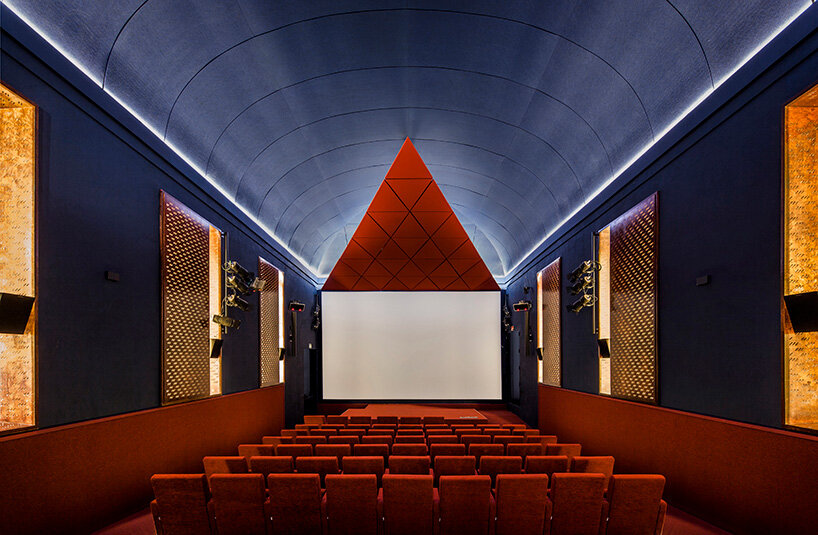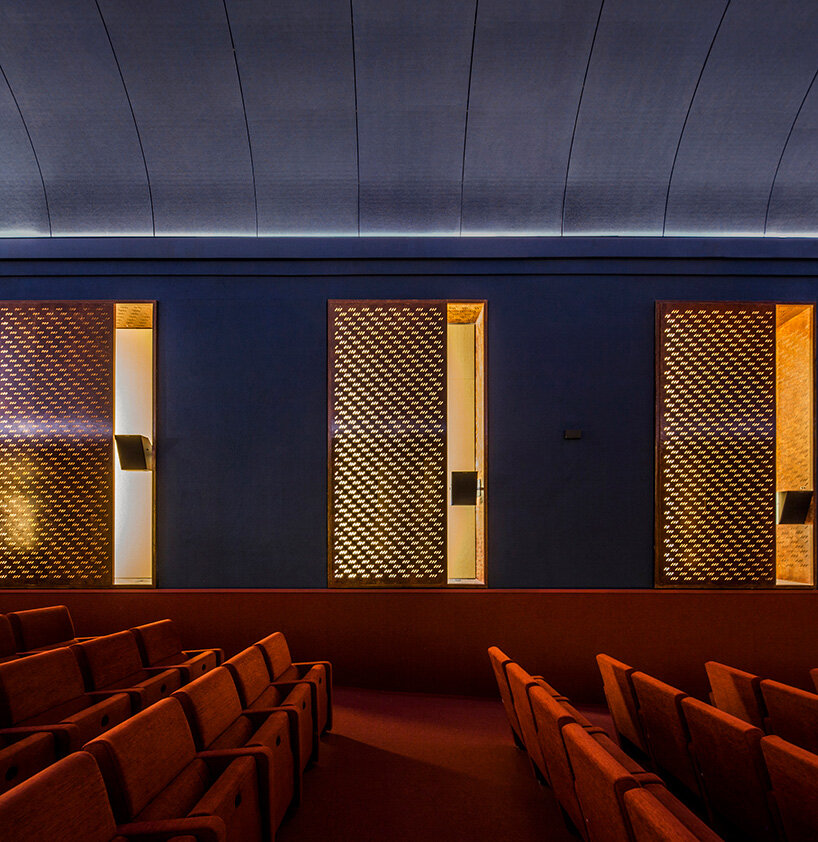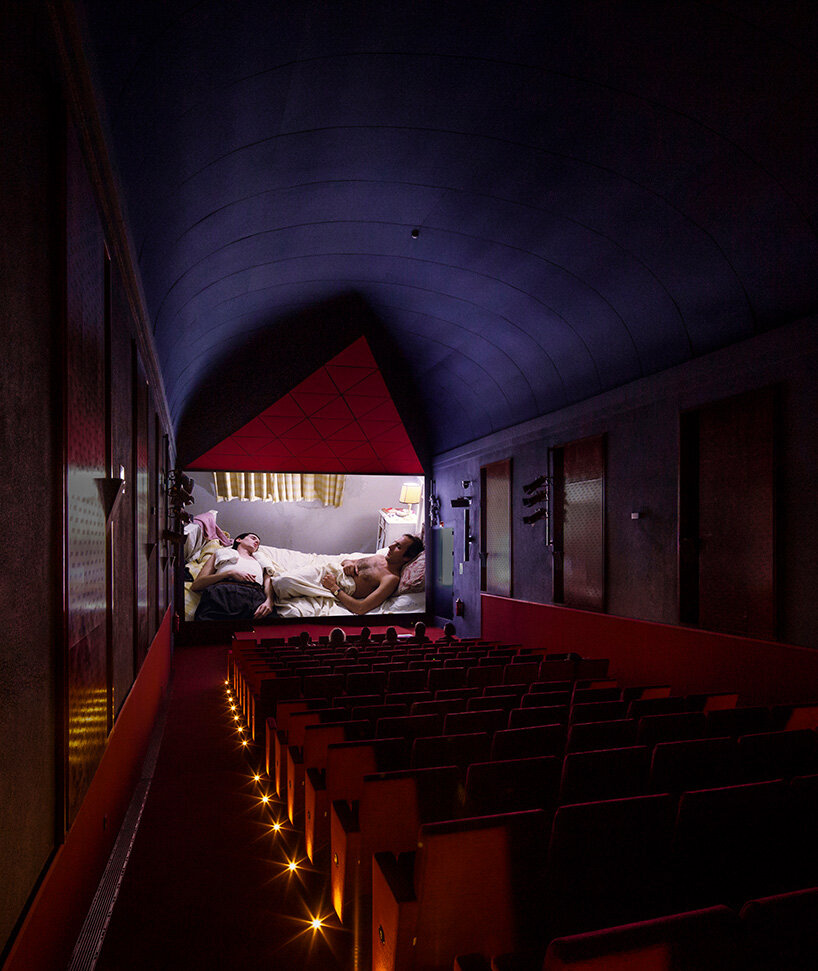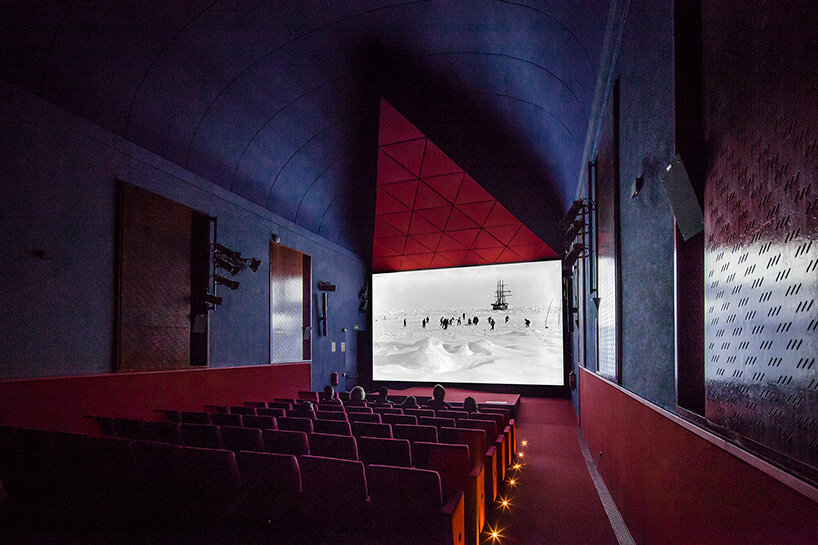BACH Transforms Historic Auditorium into Contemporary Cinema
In Madrid, the Museo Nacional Centro de Arte Reina Sofía inaugurates the former auditorium in the Sabatini building, now reimagined by BACH as a contemporary cinema and performance hall. The 520-square-meter project reinterprets the geometry and atmosphere of the 1987 design by Jaume Bach and Gabriel Mora, introducing new acoustic and visual technologies.
Jaume Bach, Anna & Eugeni Bach retain the two defining triangular geometries of the original structure, including the angular projection booth that organizes circulation at the entrance and the suspended triangle above the stage that once functioned as a reverberation device. The latter element is now reborn as a large acoustic screen concealing the central speaker. Meanwhile, the translation booths, once essential, are now obsolete and removed, and the slope of the seating is increased to improve sightlines and audience experience.

all images by Eugeni Bach
Red-and-Blue hues saturate the renewed Reina Sofía Auditorium
Materially, the intervention deepens the atmospheric qualities of the hall. The vaulted ceiling, formerly neutral, is now painted a deep blue, a ‘night sky’ that envelops the space, while the floors and walls are dressed in shades of red that recall the classical tradition of theater interiors, from Erik Gunnar Asplund’s Skandia Cinema in Stockholm to Madrid’s own Cine Doré. Between these dominant hues, the window niches become softly illuminated volumes, their absorbent surfaces evoking the sensation of looking outward, as if the audience were seated beneath an open, starlit sky.
In the entrance lobby, the Barcelona-based architects introduce a triangular storage unit that echoes the projection booth’s form and subtly directs circulation toward the rear of the hall. They preserve the existing Serliana, a characteristic arched composition, and unite all surrounding surfaces in a single, velvety red tone. Behind heavy curtains, the new cinema is revealed, its color palette and spatial composition conjuring cinematic worlds that stretch from Luis Buñuel and Pedro Almodóvar to David Lynch and Aki Kaurismäki.

the Museo Nacional Centro de Arte Reina Sofía inaugurates the former auditorium in the Sabatini building
An 18th-century space in Madrid reawakens
Located within the 18th-century General Hospital of Madrid, an iconic neoclassical structure by José de Hermosilla and Francisco Sabatini, the Reina Sofía has undergone successive transformations since its conversion into a museum in 1992 and its expansion in 2005. The original auditorium of the Sabatini building, designed by Bach and Mora, had long served as the venue for lectures and events. With the construction of two new auditoriums in the expansion, the institution was able to reconceive this earlier hall as a dedicated cinema. Through layering of form, color, and memory, BACH revamps the Reina Sofía’s original auditorium without erasing its past.

the space is reimagined by BACH as a contemporary cinema and performance hall

reinterpreting the geometry and atmosphere of the 1987 design by Jaume Bach and Gabriel Mora

Jaume Bach, Anna & Eugeni Bach retain the two defining triangular geometries of the original design

the vaulted ceiling, formerly neutral, is now painted a deep blue

